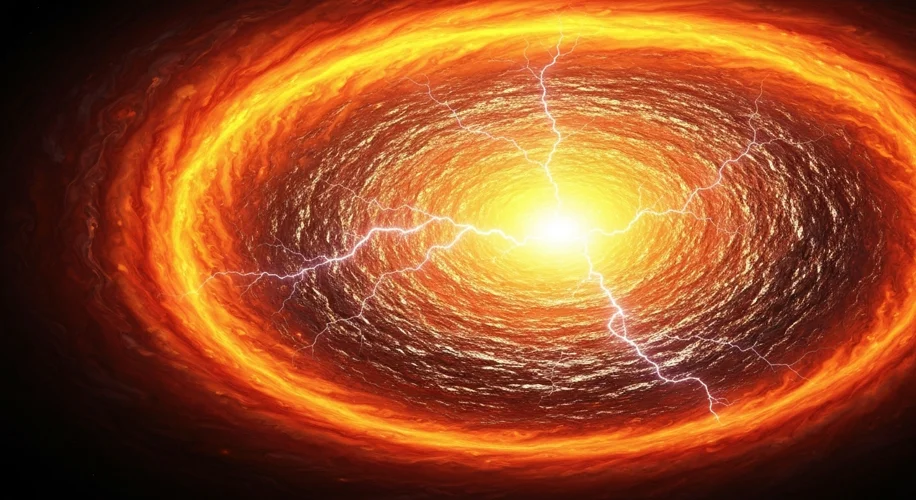For millennia, humanity has gazed at the night sky, charting the predictable dance of the stars and the wanderings of the planets. Among these celestial bodies, Jupiter has always stood out – a colossus, a king. But beneath its swirling, magnificent clouds lies a secret so profound, so alien, that it challenges our very understanding of planetary formation and the history of our solar system. Scientists are baffled by what lies at the heart of this gas giant: a core that defies comprehension.
Imagine a world without a solid surface, a realm of crushing pressures and searing temperatures. This is Jupiter, a planet so massive that it contains more than twice the mass of all other planets in our solar system combined. Its sheer scale has always been a subject of awe, but it is the mystery of its core that has scientists truly captivated and, at times, utterly perplexed. For decades, the prevailing theory suggested that Jupiter, like the rocky planets closer to the Sun, possessed a solid, rocky core at its center. This core was thought to be roughly Earth-sized, a dense knot of rock and metal that acted as the gravitational anchor around which the planet’s immense gaseous envelope accreted.
However, as our observational tools have become more sophisticated, and our theoretical models more refined, this picture has begun to fracture. Data from missions like NASA’s Galileo spacecraft, which plunged into Jupiter’s atmosphere in the 1990s, sent back tantalizing clues that hinted at something far stranger. Instead of a clear, well-defined boundary between a solid core and the surrounding metallic hydrogen, Galileo’s instruments suggested a more diffuse, blended region. This fuzzy transition zone, if it exists, would mean that Jupiter’s core isn’t a neat, solid sphere, but rather a more dispersed, perhaps even mushy, conglomerate of heavier elements.

What could this mean? One possibility is that Jupiter’s core is not a solid entity at all. Instead, it might be a super-dense fluid, a hybrid state of matter where rocky materials are mixed with vast quantities of hydrogen and helium. This ‘fuzzy’ core hypothesis suggests that heavier elements are not neatly segregated at the center, but are instead spread out in a turbulent, dynamic region. This would have profound implications for how Jupiter formed. Did its core fail to fully differentiate, remaining a chaotic mixture? Or was it perhaps struck by a Mars-sized protoplanet early in its history, a cataclysmic event that churned and dispersed its nascent core?
The implications of a diffuse core ripple outwards, affecting our understanding of Jupiter’s magnetic field, its internal heat, and even its role in the early solar system. Jupiter’s immense gravity and magnetic field have played a crucial role in shaping the orbits of other planets and deflecting comets and asteroids, acting as a cosmic shield for the inner solar system. If its core is not a solid anchor, how does this affect the generation of its powerful magnetic field? The prevailing theory is that Jupiter’s magnetic field is generated by the motion of electrically conductive metallic hydrogen deep within the planet. However, the nature and extent of this metallic hydrogen layer, and its interaction with a potentially diffused core, remain subjects of intense debate.
Scientists are now turning to advanced computer simulations and data from the Juno mission, which has been orbiting Jupiter since 2016, to probe these deep mysteries. Juno’s instruments are designed to measure Jupiter’s gravitational and magnetic fields with unprecedented accuracy, and its polar orbits allow it to peer deeper into the planet’s atmosphere than ever before. The hope is that this new data will help clarify the structure and composition of Jupiter’s core, providing answers to questions that have long eluded us.
Understanding Jupiter’s core is not merely an academic exercise. It’s about unraveling the fundamental processes that govern the birth and evolution of planets. Did giant planets like Jupiter form in the same way everywhere, or are there different pathways to creating these behemoths? The answers found in Jupiter’s heart could rewrite the textbooks on planetary formation, shedding light on the diversity of exoplanets discovered around other stars, and perhaps even offering clues about the conditions necessary for life to emerge. The gas giant continues to hold its secrets close, but with each new mission and every analytical breakthrough, we inch closer to understanding the strange, mysterious object at its very center.

